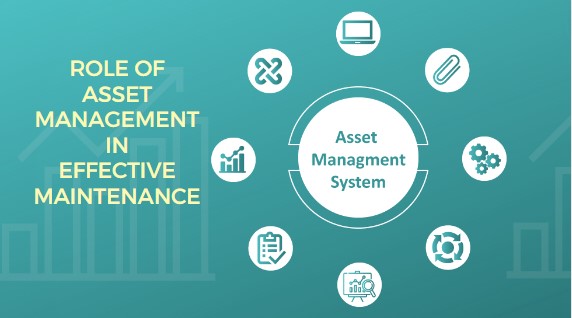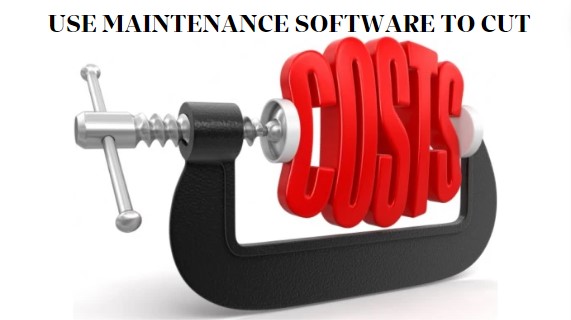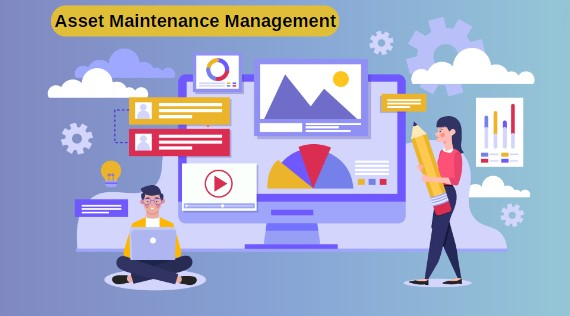
How Asset Management Help Maintenance Teams
Pratik Lohiya |
15 Feb 2024 |
07:15 AM
- Defining Asset Management and its Importance
- Overview of Asset Management vs. Maintenance Management
- Understanding Asset Management
- Signs You Need an Asset Maintenance Plan
- Asset Maintenance Best Practices for Optimal Performance
- The Importance of Asset Management in Maintenance and Reliability
- Types of Asset Maintenance Strategies
- Conclusion

Guide to Use Maintenance Software to Cut Costs
Madhurima Sanyal 03 Feb 2024 | 04:26 AMElevate facility maintenance with cutting-edge software solutions, enhancing work order management and optimizing physical asset performance for superior maintenance efficiency and strategic cost control...
Asset management, a multifaceted approach, encompasses the systematic handling of physical resources throughout their lifecycle to optimize performance, reduce costs, and ensure longevity.
Defining Asset Management and its Importance
Asset management entails the meticulous supervision of tangible assets, ranging from machinery and equipment to facilities and infrastructure. It encompasses a spectrum of activities including acquisition, maintenance, utilization, and disposal. The crux of asset management lies in enhancing asset performance while minimizing costs and risks.

The importance of asset management cannot be overstated in contemporary business landscapes. It empowers organizations to maximize the value derived from their assets, thereby driving operational efficiency and profitability. By fostering a proactive approach towards asset upkeep and utilization, businesses can mitigate downtime, improve productivity, and bolster competitiveness in dynamic markets.
Overview of Asset Management vs. Maintenance Management
While closely intertwined, asset management and maintenance management diverge in their scopes and objectives. Asset management revolves around the strategic oversight of assets throughout their entire lifecycle, encompassing aspects such as acquisition, utilization, and disposal. On the other hand, maintenance management focuses primarily on the operational aspects of asset upkeep, including preventive and corrective maintenance activities aimed at sustaining asset performance and longevity.
Understanding Asset Management
Components of Asset Management
Asset management encompasses several key components that collectively contribute to the effective oversight and optimization of assets within an organization.
Identification - Identification involves accurately cataloging and documenting all assets owned or utilized by the organization. This process ensures comprehensive visibility into the asset inventory, facilitating better decision-making regarding resource allocation and utilization.

Location - Tracking the physical location of assets is essential for efficient management and maintenance. Utilizing asset tracking technologies such as GPS or RFID enables organizations to monitor asset movement in real-time, enhancing operational efficiency and security.
Condition - Assessing the condition of assets is crucial for determining maintenance needs and predicting performance. Through regular inspections and monitoring, organizations can identify potential issues early on and implement proactive maintenance strategies to prevent downtime and costly repairs.
Specification - Understanding the specifications and capabilities of assets is vital for optimizing their usage and performance. Detailed documentation of asset specifications allows for informed decision-making regarding asset deployment, maintenance, and upgrades.
Maintenance - Maintenance forms a cornerstone of asset management, encompassing both preventive and corrective measures to ensure optimal performance and longevity. By adhering to a structured maintenance schedule and implementing best practices, organizations can minimize downtime and extend asset lifecycles.
Cost - Managing costs associated with asset acquisition, operation, and maintenance is imperative for financial sustainability. By analyzing maintenance costs and performance data, organizations can identify opportunities for cost optimization and implement strategies to maximize the return on investment in their assets.

Signs You Need an Asset Maintenance Plan
Implementing an asset maintenance plan is imperative for organizations seeking to maximize operational efficiency and minimize costly downtime. Recognizing the signs indicating the need for such a plan is crucial for proactive asset management.
Unplanned Downtime Is an On-Going Issue
Frequent instances of unplanned downtime signify underlying issues in asset management and maintenance practices. If your organization is experiencing regular disruptions to operations due to unexpected breakdowns or failures, it's a clear indication that an effective asset maintenance plan is necessary. By implementing preventive maintenance measures and proactive monitoring, organizations can mitigate the risk of unplanned downtime and optimize asset performance.
The Rate of Ageing Assets Is Increasing
As assets age, their reliability and performance tend to decline, making them more susceptible to failures and breakdowns. If your organization's asset portfolio consists predominantly of ageing assets, it's essential to develop a comprehensive asset maintenance plan to address their specific maintenance needs. By prioritizing maintenance tasks based on asset criticality and condition, organizations can prolong the lifespan of ageing assets and minimize the risk of unexpected failures.
Recognizing these signs and implementing an asset maintenance plan tailored to your organization's needs is essential for optimizing asset performance, reducing maintenance costs, and ensuring the continuity of operations.
Asset Maintenance Best Practices for Optimal Performance

Effective asset maintenance is essential for ensuring the longevity and performance of critical assets within an organization. By implementing best practices, businesses can minimize downtime, reduce maintenance costs, and maximize asset reliability.
Why is asset maintenance important?
Asset maintenance plays a pivotal role in the operational efficiency and reliability of assets. It encompasses proactive measures aimed at preventing unexpected breakdowns, optimizing performance, and extending asset lifespan. Effective maintenance practices not only enhance asset performance but also contribute to cost savings and operational continuity.
Key Best Practices:
Regular Inspection and Maintenance - Regular inspections and maintenance routines are fundamental for identifying potential issues early on and addressing them before they escalate into costly problems. By conducting scheduled inspections and adhering to maintenance schedules, organizations can minimize the risk of unplanned downtime and ensure the continuous operation of critical assets.
Predictive Maintenance - Predictive maintenance utilizes advanced technologies such as sensors and data analytics to predict asset failures before they occur. By monitoring asset performance data in real-time, organizations can detect anomalies and proactively address maintenance needs, thereby optimizing asset performance and minimizing downtime.

Effective Asset Tracking - Comprehensive asset tracking systems facilitate the efficient management and monitoring of assets throughout their lifecycle. By accurately tracking asset location, usage, and maintenance history, organizations can optimize asset utilization, streamline maintenance efforts, and ensure compliance with regulatory requirements.
Data-Driven Decision Making - Utilizing asset performance data and analytics enables informed decision-making regarding maintenance strategies and resource allocation. By analyzing data trends and performance metrics, organizations can identify opportunities for improvement, optimize maintenance schedules, and enhance asset reliability and performance.
Cost Management and Optimization - Effective cost management is integral to maintaining a balance between asset performance and maintenance expenses. By implementing cost-effective maintenance strategies, prioritizing maintenance tasks based on asset criticality, and optimizing resource allocation, organizations can minimize maintenance costs while maximizing asset performance and reliability.
By incorporating these best practices into their asset maintenance strategies, organizations can achieve optimal asset performance, minimize downtime, and drive operational excellence.
The Importance of Asset Management in Maintenance and Reliability
Asset management plays a pivotal role in ensuring the reliability and efficiency of organizational assets throughout their lifecycle. By adopting effective asset management practices, businesses can enhance maintenance processes, optimize resource utilization, and mitigate risks associated with asset failures.
Supporting Proactive Maintenance Strategies
Effective asset management enables organizations to transition from reactive to proactive maintenance approaches. By implementing preventive and predictive maintenance strategies, businesses can anticipate and address maintenance needs before they escalate into costly failures. This proactive approach not only minimizes downtime but also extends asset lifespan and enhances overall reliability.
Improving Resource Allocation
Asset management facilitates optimal resource allocation by providing insights into asset utilization and performance. By analyzing asset data and maintenance history, organizations can identify underutilized assets, prioritize maintenance tasks, and allocate resources efficiently. This ensures that resources are allocated where they are most needed, maximizing operational efficiency and minimizing unnecessary costs.
Guiding Data-Driven Decision Making

Asset management processes leverage data and analytics to inform decision-making regarding maintenance strategies and asset investments. By monitoring asset performance metrics and trends, organizations can identify areas for improvement, optimize maintenance schedules, and allocate resources effectively. This data-driven approach enhances decision-making accuracy and ensures that maintenance efforts are aligned with organizational goals.
Mitigating Risk
Effective asset management helps organizations mitigate risks associated with asset failures and downtime. By implementing robust maintenance strategies and monitoring asset performance, businesses can identify potential risks and take proactive measures to address them. This proactive risk management approach minimizes the likelihood of costly failures and disruptions, ensuring operational continuity and reliability.
Shifting Maintenance and Reliability to a Profit Center
By prioritizing asset management and maintenance as strategic priorities, organizations can transform maintenance and reliability functions into profit centers. Effective asset management practices not only optimize asset performance and minimize downtime but also drive cost savings and enhance overall operational efficiency. This shift towards proactive maintenance and reliability management enables organizations to realize tangible business benefits and gain a competitive edge in the market.
Types of Asset Maintenance Strategies
Asset maintenance strategies are essential for ensuring the reliability and performance of critical assets within an organization. By adopting the right maintenance approach, businesses can optimize asset performance, minimize downtime, and extend asset lifespan. Here are the key types of asset maintenance strategies:
Preventive Maintenance
Preventive maintenance involves scheduled inspections and routine maintenance tasks aimed at preventing potential failures and extending asset lifespan. By performing regular maintenance activities such as lubrication, cleaning, and component replacements, organizations can minimize the risk of unexpected breakdowns and ensure optimal asset performance.
Predictive Maintenance
Predictive maintenance utilizes data and analytics to predict asset failures before they occur. By monitoring asset performance metrics and trends in real-time, organizations can identify early signs of deterioration and proactively address maintenance needs. This proactive approach helps minimize downtime, optimize maintenance schedules, and maximize asset reliability.
Condition-based Maintenance
Condition-based maintenance focuses on monitoring asset condition and performance to determine maintenance needs. By utilizing sensors and monitoring technologies, organizations can track asset health indicators such as temperature, vibration, and corrosion levels. This data-driven approach enables organizations to optimize maintenance efforts and prioritize tasks based on asset condition, minimizing unnecessary maintenance activities and reducing costs
Reactive Maintenance
Reactive maintenance, also known as run-to-failure maintenance, involves addressing maintenance needs only after an asset has failed. While reactive maintenance may be suitable for non-critical assets or situations where the cost of failure is low, it can lead to increased downtime, higher repair costs, and reduced asset reliability in the long run.
Conclusion
Effective asset management and maintenance strategies are paramount for organizations striving to optimize asset performance, minimize downtime, and maximize operational efficiency. By implementing proactive maintenance approaches such as preventive and predictive maintenance, businesses can anticipate maintenance needs, address potential issues before they escalate into failures, and extend asset lifespan. Additionally, leveraging data-driven decision-making and monitoring asset performance enables organizations to optimize maintenance efforts, allocate resources efficiently, and mitigate risks associated with asset failures.

In conclusion, effective asset management and maintenance strategies are paramount for organizations striving to optimize asset performance, minimize downtime, and maximize operational efficiency. By implementing proactive maintenance approaches such as preventive and predictive maintenance, businesses can anticipate maintenance needs, address potential issues before they escalate into failures, and extend asset lifespan. Additionally, leveraging data-driven decision-making and monitoring asset performance enables organizations to optimize maintenance efforts, allocate resources efficiently, and mitigate risks associated with asset failures.
Furthermore, integrating asset management processes and utilizing management software enhances visibility into asset lifecycle management, streamlines maintenance tasks, and improves overall operational effectiveness. By prioritizing asset management as a strategic priority and shifting maintenance and reliability functions to profit centers, organizations can realize tangible business benefits and gain a competitive edge in the market.
By investing in effective asset management strategies and embracing a proactive maintenance mindset, organizations can ensure the reliability, longevity, and performance of critical assets, driving sustainable growth and success in today's dynamic business environment.